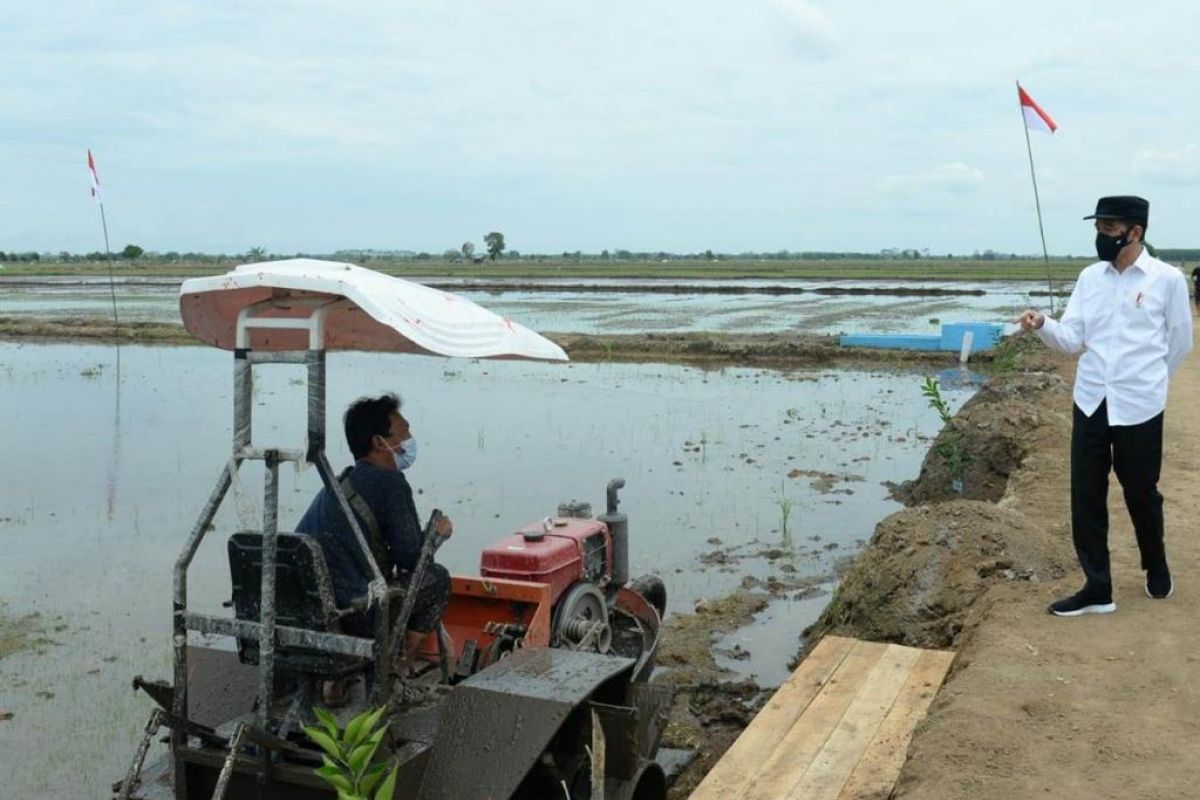"The report that I received from the Meteorological, Climatological, and Geophysical Agency (BMKG) said that the La Nina phenomenon is forecast to cause an increase in the accumulated monthly rainfall in Indonesia by between 20 to 40 percent above the normal rate," the president remarked at the Merdeka Palace in Jakarta on Tuesday.
President Jokowi made the statement at a limited meeting on "Hydrometeorologican Disaster Anticipation" held through videoconferencing with the Indonesia Onward cabinet ministers.
La Nina is an anomalous condition in the central and eastern parts of the tropics wherein the Pacific Ocean surface temperature goes colder than the normal conditions.
"To this end, I want us all to prepare ourselves as a precautionary measure against the possibilities of a hydrometeorology disaster," he emphasized.
President Jokowi also called to meticulously gauge the impact of La Nina on productions in the agriculture, fisheries, and transportation sectors.
"As 20 to 40 percent is not a small increase, and I also want the information on weather development to be communicated and disseminated as soon as possible to all provinces and regions, so that everyone can know what the future monthly rainfall increase will be like," the president noted.
The agency had earlier stated that the impact of La Nina may not be widespread across Indonesia.
During the period from October to November 2020, an increase in monthly rainfall due to La Nina can occur in nearly all Indonesian regions except for Sumatra. Furthermore, during the December-February 2021 period, increased rainfall due to La Nina can occur in eastern Kalimantan, Sulawesi, Maluku-North Maluku, and Papua.
In October, several seasonal zones in Indonesia are expected to enter the rainy season, including the east coast of Aceh, parts of Riau, Jambi, South Sumatra, Bangka, Lampung, Banten, parts of West Java, parts of Central Java, a part of East Java, parts of West Kalimantan, parts of Central Kalimantan, South Kalimantan, part of East Kalimantan and part of North Kalimantan, a part of Sulawesi, North Maluku, and a small part of West Nusa Tenggara.
There are rising concerns that the increase in rainfall will lead to hydrometeorological disasters, such as landslides and floods, so all related parties are necessitated to immediately take mitigatory measures to reduce the disaster risk to ensure no resulting casualties.
Hydrometeorological disasters are caused by the weather phenomenon. Apart from floods and landslides, other hydrometeorological disasters include strong winds, hail, and cyclones. Related news: Use data to anticipate impacts of La Nina: BNPB
Related news: Indonesia braces for La Nina-induced heavy rainy season
EDITED BY INE
Translator: Desca Lidya Natalia/Aria Cindy
Editor: Suharto
Copyright © ANTARA 2020












